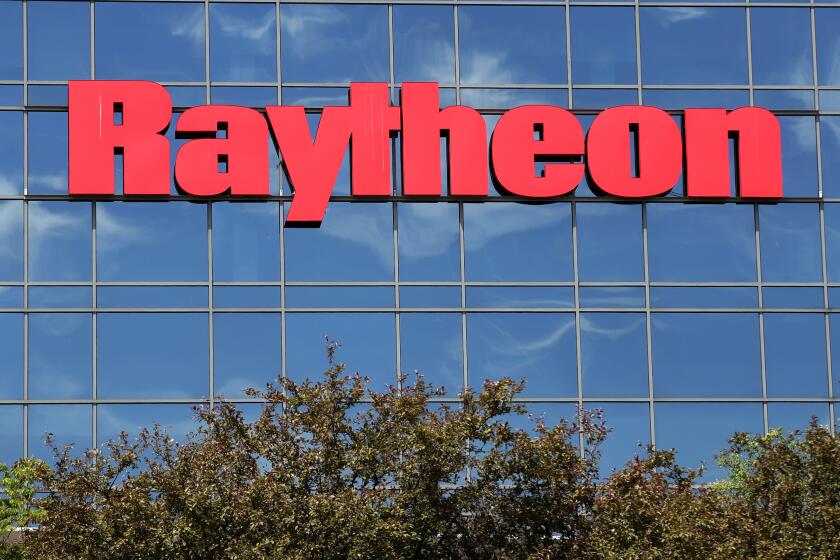Apple takes on Amazon Echo and Google Home with its own smart speaker: HomePod

The iMac Pro was revealed and touted as the most powerful Mac ever. (June 5, 2017)
Now it's going after a bigger target: your home.
On Monday, the Cupertino, Calif., company announced the HomePod — a home speaker with Apple’s digital assistant, Siri, built into it — at its annual World Wide Developers Conference in San Jose.
Similar to Amazon’s Echo and Google’s Home — voice-activated, Internet-connected speakers that play music, answer questions and provide information such as the news, weather, sports updates and metric conversions — the HomePod listens and responds to voice commands.
Using the HomePod is like using Siri, without the need to tap any buttons. To get its attention, users simply say, “Hey Siri.”
Around 7 inches tall, the device is wrapped in a mesh fabric and comes in white and dark gray. Powered by an A8 chip — the same chip found in the iPhone — it is also spatially aware, modifying the direction of sound to suit its environment.
Starting at $349, the device, which ships in December, is nearly double the cost of the Amazon Echo ($179.99) and more than three times the price of the Google Home ($109).
That is not unusual, according to technology analysts, who said Apple has always sold its products at a higher price because it wants to convey that its gadgets are more premium than the competition’s.
And although its competition has had a head start — the Amazon Echo launched in 2014 for Amazon Prime members and the Google Home was released last year — experts in voice and visual search said instead of being late to the party, Apple could raise the bar like it did for digital music players when it launched the iPod, or smartphones, as it did with the iPhone.
“Voice is the next frontier for search and discovery, and there are lots of opportunities to leverage voice command within the home,” said Michael Levine, vice president of marketing at Photon, a firm that creates voice-based digital experiences. “It definitely puts a dent into Google Home.”
During its developers conference, Apple highlighted the difference between the HomePod and the Echo, saying that although the Echo was “smart” compared to wireless speakers such as Sonos’ offerings, its sound quality left much to be desired. The HomePod, in comparison, was the best of both worlds.
“It’s a great dance they’re doing,” Levine said, because as powerful as Apple’s technology may be, Amazon remains the market leader and has a built-in market in Amazon Prime subscribers.
Apple did not announce any partnerships for the HomePod on Monday, but Levine expects the company to throw around its weight to secure partnerships that give it leverage over Amazon.
More than 35 million people in the U.S. are expected to use a voice-activated speaker at least once a month this year, more than doubling from last year, according to the research firm eMarketer.
Amazon recently unveiled a version of the Echo with a camera, touch-screen display and video-calling capabilities. The new Echo Show goes on sale June 28 for $229.99. Amazon also has the Echo Dot, a budget version of the Echo that starts at $49.99. Google, meanwhile, previewed new speaker features such as hands-free phone calling during its software conference last month.
Until Monday, that left Apple as one of the few major tech companies without a digital assistant/home speaker offering. Although it was the first smartphone maker to come out with a digital assistant when Siri debuted in 2011, it hasn't had a stand-alone assistant. For Apple, having one broadens the role that its software, services and gadgets play in people's lives.
It wouldn't be the first time that Apple hopped on the bandwagon of a technology product popularized by a competitor. For instance, Apple initially resisted enlarging the size of the iPhone's screen despite strong sales for larger-display phones made by Samsung and other rivals. But the company relented, and Apple's larger phones have become hot commodities as more people have embraced having a bigger display to look at pictures and watch video on the devices.
The HomePod is Apple’s first new product category since the
With more companies betting on voice and visual search being the next frontier, the HomePod positions Apple as a major player in a burgeoning category.
During Monday’s event Apple also introduced updates and improvements to its professional line of Mac laptops and desktops, and iPads. The company announced the new iMac Pro, Apple’s most powerful computer to date with a 27-inch Retina 5K display, which will go on sale in December starting at $4,999. It also announced a new 10.5-inch and 12.9-inch iPad Pro that’s faster and more powerful than existing models with more memory and storage. The new iPad Pro will go on sale next week and start at $649.
In addition to touting new hardware, Apple announced its new mobile operating system, bolstered augmented and virtual reality tools for developers, an expanded Apple Pay to facilitate person-to-person money transfers (similar to Venmo and Square’s Cash app), and a revamped app store.
The Associated Press contributed to this report.
UPDATES:
1:50 p.m.: This article was updated to include details about Apple’s new HomePod product.
This article was originally published at 7:05 a.m.
Inside the business of entertainment
The Wide Shot brings you news, analysis and insights on everything from streaming wars to production — and what it all means for the future.
You may occasionally receive promotional content from the Los Angeles Times.








